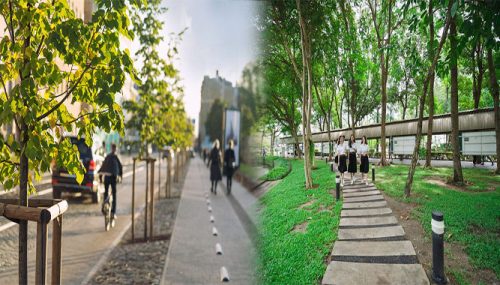As we become more environmentally conscious, more and more cities and municipalities are looking into sustainable materials to construct pedestrian walkways. Using sustainable materials has many benefits for both the environment and the community.
Here are some of the benefits of using sustainable materials in pedestrian walkways:
1. Reduces Environmental Footprint
Sustainable materials do not produce as much waste as traditional construction materials. Materials like recycled plastic and reclaimed wood prevent the need to cut down more trees or mine more minerals so that new materials will not have to be manufactured. Sustainable materials help reduce carbon emissions associated with transportation, processing and manufacturing of new materials.
2. Increased Durability
Sustainable materials have a longer lifespan than traditional materials making them a good investment for the long term. For example, materials like recycled plastic have high durability and can withstand harsh weather conditions and heavy traffic, which reduces the need for maintenance and repairs.
3. Cost-Effective
Sustainable materials may have a higher initial cost but they are more cost-effective in the long run. By having to pay less for maintenance and repairs, it becomes a more feasible option in the long-term. Plus, low maintenance materials like recycled plastic wood boards do not require repainting or go through a process of termite proofing which again saves money for maintenance.
4. Improved safety
Sustainable materials provide better safety benefits for pedestrians. For instance, studies show that crosswalks that have natural vegetation in the buffers zones tend to reduce accidents. Additionally, materials like rubberized asphalt with good skid resistance improves the safety of pedestrians as it reduces the likelihood of slips. Especially during a season of increased rain or ice, having a good slip resistance surface material will assist pedestrians in reducing the likelihood of slip-and-falls.
5. Aesthetically Pleasing
Sustainable materials have a unique look which adds beauty instead of industrial and manufactured appearance. They come in a variety of colors and textures, blending naturally with the existing surrounding. The natural appeal can enhance its value as well.
Using sustainable materials in pedestrian walkways not only benefits the environment, but it also benefits the community. Sustainable materials provide a solution to a more durable, safer, cost-effective, and visually appealing walkway. Incorporating such materials now can make a huge difference in our environment and our wellbeing that will resonant through the future.

